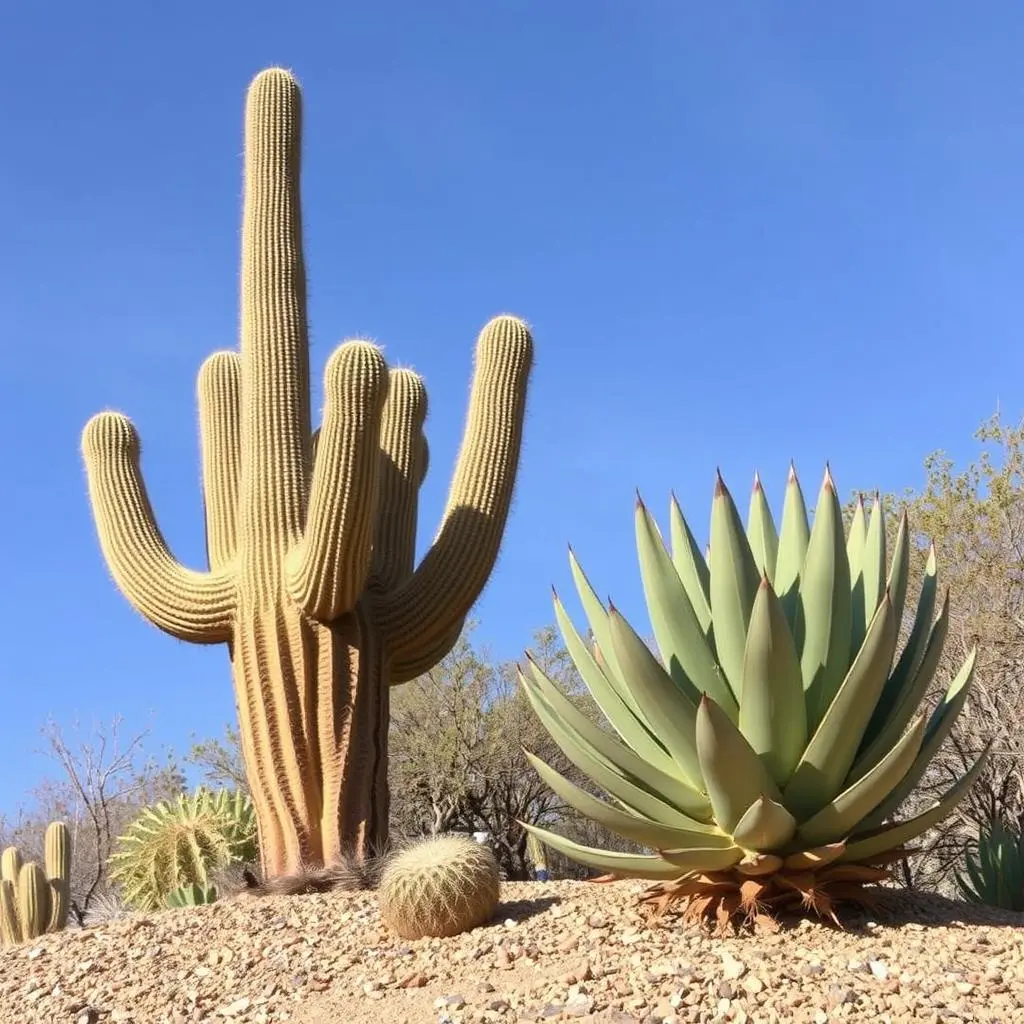
Desert plants, typically renowned for their drought resistance and heat tolerance, are now struggling due to the intensifying effects of climate change. This article explores the challenges faced by these hardy species amid increasingly severe heat waves and prolonged high temperatures.
Climate Change Intensifies Heat Stress
On West Charleston Boulevard, horticulturist Norm Schilling stops by his favorite African sumac tree, which he saved years ago from frost damage. Today, this resilient tree faces a new threat: an extended period of oppressive heat. Despite their inherent tolerance for harsh environments, desert plants like agave and saguaro cacti are showing signs of severe stress and damage due to the record-breaking temperatures of recent summers.
Schilling, who runs Mojave Bloom Nursery, has observed a range of plant distress across Las Vegas:
- Mock Orange Shrubs: Sunburned leaves with damaged spots.
- Mulberry Trees: Drying out due to insufficient water.
- Juniper Trees: Significant dieback and severe decline.
- Gopher Spurge Succulents: Burnt and yellowed branches, some potentially irrecoverable.
Las Vegas has broken several heat records this summer, including its highest temperature ever recorded at 120 degrees Fahrenheit. The city experienced seven consecutive days above 115 degrees, with nighttime temperatures remaining high.
Ecological Impact and Research
The Southwest’s increasing temperatures are testing the limits of desert flora. Kevin Hultine, director of research at the Desert Botanical Garden in Phoenix, notes a significant rise in saguaro cactus mortality since 2020. The harsh summers and prolonged heat waves have exacerbated the problem. In Phoenix, where last year’s summer was the hottest on record, saguaros have suffered severe damage, including the loss of their arms and even toppled plants.
Hultine and his team are investigating whether the saguaro die-off results from individual heat waves or the cumulative effects of consecutive extreme summers. Due to the longevity of cacti, it may take years to fully understand the impact.
The Double Threat of Heat and Drought
Krista Kemppinen, a senior scientist at the Center for Biological Diversity, highlights the detrimental effects of combined heat and drought on desert ecosystems. Although saguaros are not likely to face extinction, the observed heat stress is troubling. The extreme heat and lack of cooler periods between record-breaking summers are preventing plants from recovering.
Kemppinen also notes that lesser-known desert species, which have smaller populations and are less studied, might be even more vulnerable to these changing conditions.
Desert Plants and Climate Change
The increasing frequency of extreme heat events is prompting horticulturists like Schilling to reassess their understanding of desert ecosystems. In response, Schilling is working to raise awareness about climate change and its impacts on local flora. He is collaborating with local nonprofits and government agencies to enhance climate resilience across the Las Vegas Valley.
Schilling’s efforts underscore the need to adapt and find sustainable solutions to maintain a healthy and beautiful environment in the face of climate challenges.
Conclusion
The unexpected heat damage to traditionally resilient desert plants reveals the profound impact of climate change on even the hardiest species. As temperatures continue to rise, understanding and mitigating these effects will be crucial for preserving the unique desert ecosystems and ensuring their future resilience.Even Desert Plants Known for Their Resilience Are Burning and Dying in the Heat
More: https://exploration-echo.com/2024/08/12/top-5-myths-about-global-warming-and-whats-really-happening/